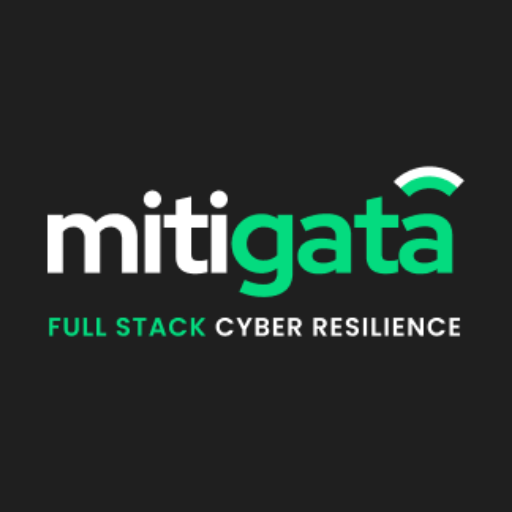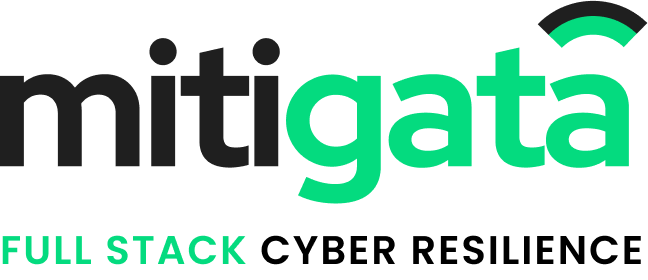Today, more than 15 billion stolen credentials are floating around the dark web 2025. That’s billions of logins, passwords, and personal records being traded every day in hidden online markets.
Even though the average cost of a data breach dropped slightly to $4.44 million this year, the impact is still massive. Businesses lose money, trust, and valuable time trying to recover from something that could have been prevented.
In this blog, we’ll look at how dark web data leaks actually happen and share the best practices your organisation can follow to keep sensitive information safe.
Mitigata – Your Trusted Cybersecurity Partner
800+ businesses already rely on Mitigata to be their eyes in the digital underground. With 500+ cyber products and proven expertise across insurance, security, and compliance sectors, we know how to turn the tables when a cyberattack occurs.
Areas We Monitor
- Hacker Forums – Where your company, executives, and vulnerabilities are discussed
- Criminal Marketplaces – Where your stolen data gets sold and malware gets distributed
- Telegram Channels – Where APT groups coordinate attacks and share intelligence
- Breach Archives – Where your past data leaks continue to circulate
- Exposed Assets – From GitHub repos to misconfigured cloud storage
What Makes Our Dark Web Monitoring Services Different?
Unlike generic monitoring services that flood you with raw data, we deliver intelligence that matters. When a threat actor mentions your company in a closed forum, we don’t just raise a flag, we analyse their reputation, track record, and capability level.
Every leaked password or record can shut down your business
Mitigata, trusted by 800+ businesses, our platform ensures continuous protection with advanced features for you and your data.

What is a Data Leak and Why Does it Happen
A data leak occurs when sensitive information, such as customer records, financial data, or internal documents, is exposed to the public either accidentally or through poor security controls.
Unlike a cyberattack, a data leak doesn’t always involve a hacker breaking in. Many leaks occur because data is stored, shared, or managed carelessly within the organisation.
This exposed data can lead to identity theft, financial fraud, and reputational loss, not to mention the legal and regulatory penalties that follow. In fact, nearly 60% of organisations experienced at least one data leak in 2024, exposing millions of records globally.
Here are some of the most common reasons data leaks occur:
Human Error: Employees might accidentally send sensitive files to the wrong person, leave documents unsecured, or upload data to public cloud storage without proper access controls.
Misconfigured Systems: Cloud databases, file servers, or APIs left open to the internet are easy targets for anyone searching for exposed data.
Weak Access Controls: When user permissions aren’t properly managed, unauthorised individuals can access and copy confidential information.
Insider Threats: Sometimes, leaks are caused by disgruntled employees or contractors intentionally sharing or selling information.
Third-Party Risks: Vendors and partners with poor security practices can accidentally leak data connected to your systems.
Want to stay ahead of the curve? check out the top 10 SIEM solutions in India to strengthen security monitoring and detect threats faster
Best Practices for Preventing Data Leaks
Below is a detailed guide on how organisations can reduce the risk and protect their sensitive information from ending up on the dark web:
Data Classification and Access Control
Every organisation should begin by knowing what kind of data it collects and where it resides. Not all data carries the same level of risk, so classify it according to sensitivity. Once data is categorised, apply the Privileged Access Management tool to ensure only authorised users can access it.
Example: A human resources team may have access to employee files, but the IT staff do not need that data. By limiting access based on roles, you reduce the number of potential leak points.
You can also use data loss prevention (DLP) solutions that automatically detect and block attempts to share or transfer sensitive data through unauthorised channels.
Employee Training and Security Awareness
Employees remain one of the biggest risks when it comes to data leaks. A well-intentioned employee can still cause damage by clicking a phishing link, using weak passwords, or mishandling files. Continuous training helps employees understand what data is sensitive, how to recognise phishing attempts, and how to report suspicious activity.
Example: A quarterly security awareness session or simulated phishing test can remind employees to stay alert and avoid risky behaviours. Encourage a “see something, say something” culture where staff report unusual emails or system behaviour immediately.
Train Your Workforce With India’s Leading Phishing Simulation
With 500+ businesses secured, Mitigata’s simulations offer experience-based learning, role-specific campaigns, and regular tests

Strong Authentication and Endpoint Security
Multi-factor authentication (MFA) is one of the simplest and most effective ways to protect accounts. Requiring users to verify their identity through a second factor, such as a mobile prompt or security key, prevents attackers from gaining access even if passwords are stolen.
Additionally, secure all endpoints such as laptops, smartphones, and IoT devices with up-to-date antivirus software, firewalls, and encryption tools.
Example: If an employee loses a company laptop, endpoint encryption ensures the stored data remains unreadable without the correct credentials.
Continuous Monitoring and Auditing
Constant visibility into your systems helps detect and contain potential leaks before they escalate. Implement real-time monitoring tools that flag unusual activity, such as large data downloads or unauthorised login attempts. Regular audits should also be performed to identify weak configurations and ensure compliance with internal policies.
Example: A SIEM tool can alert your security team if someone downloads a large number of customer files outside of business hours.
Get personalised SIEM services Starting at Just ₹6,00,000/Year*

Secure Backup and Encryption
Encrypt sensitive data wherever it resides, including in databases, on employee devices, and in transit between systems. Encryption ensures that even if data is stolen, it cannot be read without the proper keys. Secure backups are equally important to help organisations recover quickly after a breach or ransomware attack.
Example: Regularly back up critical data to an encrypted cloud or offline storage environment that only designated personnel can access. This prevents total data loss if your primary system is compromised.
Vendor and Third-Party Risk Management
Many data leaks occur because of third-party vendors that lack strong security measures. Before sharing any sensitive data, assess each vendor’s cybersecurity posture and include data protection clauses in contracts.
Example: If you work with an external marketing agency that accesses customer data, verify that it complies with standards such as GDPR, ISO 27001, or SOC 2. Conduct regular audits to confirm compliance.
Secure Every Vendor With Automated Third-Party Risk Controls

Regular Patch and Update Management
Cybercriminals often exploit outdated software to gain access. Keeping systems, applications, and devices up to date with the latest security patches closes known vulnerabilities. Automating this process helps ensure no update is missed.
Example: The MOVEit vulnerability in 2023 caused widespread data exposure simply because many organisations delayed patching. A strong update policy can prevent such incidents.
Dark Web Monitoring and Incident Response
Even the most secure systems are not immune to leaks. Implementing dark web monitoring allows organisations to detect stolen credentials or confidential data being sold online.
If a leak is detected, a well-prepared incident response plan should guide how to contain the damage, notify affected parties, and recover quickly.
Example: If your organisation discovers that employee login details are being traded on the dark web, immediate password resets and MFA enforcement can stop attackers before they can use those credentials.
Every leaked password or record can shut down your business

Build a Security-First Culture
A security-first culture ensures everyone in the organisation understands their role in protecting data. Reinforce good security practices through internal campaigns, clear policies, and visible leadership support.
Example: Celebrate teams that report potential threats or identify security improvements. Making security part of your company’s daily routine helps reduce human error and builds long-term resilience.
In 2024, three out of four organisations faced a SaaS security incident. Here’s why investing in cyber insurance has become a critical move for SaaS companies today.
Conclusion:
The best way to protect your organisation from future breaches is to institute advanced monitoring and response capabilities to detect threats before sensitive data is compromised.
Connect with Mitigata today to design and implement enterprise-ready protections specific to your organisation.
Think your data is safe? Cybercriminals might already be discussing it underground.
Act before a breach exposes you.
Get Your Dark Web Monitoring Assessment Today.

